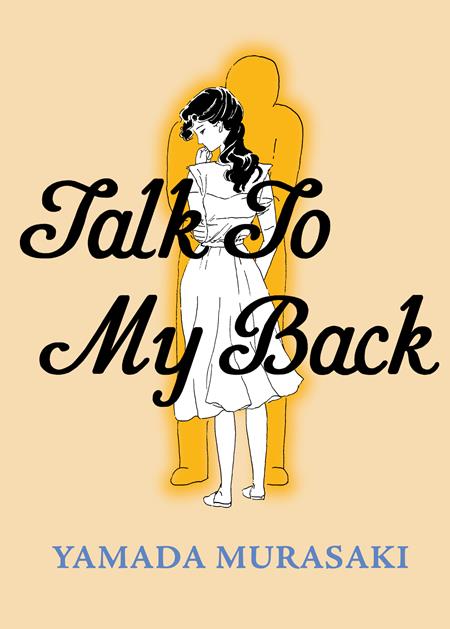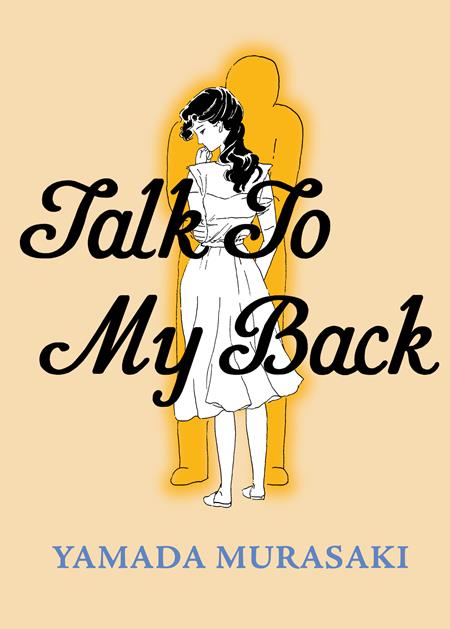Drawn & Quarterly
TALK TO MY BACK
TALK TO MY BACK
Couldn't load pickup availability

Collapsible content
ABOUT
A celebrated masterwork shimmering with vulnerability from one of alt-manga's most important female artists. “Now that we’ve woken from the dream, what are we going to do?” Chiharu thinks to herself, rubbing her husband’s head affectionately. Set in an apartment complex on the outskirts of Tokyo, Murasaki Yamada's Talk to My Back (1981–84) explores the fraying of Japan's suburban middle-class dreams through a woman's relationship with her two daughters as they mature and assert their independence, and with her husband, who works late and sees his wife as little more than a domestic servant. While engaging frankly with the compromises of marriage and motherhood, Yamada remains generous with the characters who fetter her protagonist. When her husband has an affair, Chiharu feels that she, too, has broken the marital contract by straying from the template of the happy housewife. Yamada saves her harshest criticisms for society at large, particularly its false promises of eternal satisfaction within the nuclear family—as fears of having been "thrown away inside that empty vessel called the household" gnaw at Chiharu’s soul. Yamada was the first cartoonist in Japan to use the expressive freedoms of alt-manga to address domesticity and womanhood in a realistic, critical, and sustained way. A watershed work of literary manga, Talk to My Back was serialized in the influential magazine Garo in the early 1980s, and is translated by Eisner-nominated Ryan Holmberg.
PRE-ORDER
Secure the best deal by acting fast! Our Pre-Order promo offers unbeatable prices on must-have items. Be quick to lock in the lowest cost before the promo ends.
The best part? You won't be charged until your item is ready to ship. This means you can reserve your product at the best price without immediate payment. Whether you're first in line or just ahead of the crowd, you're making a smart choice. Reserve your item now and enjoy the benefits of being an early buyer, with the added flexibility of delayed payment!
STANDARD, PRIMARY, DM AND VARIANT COVERS
Standard and Primary covers are widely available through general retailers. They often have higher print runs and can be cheaper, especially during sales.
In contrast, Direct Market (DM) and variant covers are primarily sold in comic shops. DM editions tend to have more limited availability and may be more valuable to collectors.
The main differences lie in artwork style, availability, price, and collector appeal. Ultimately, the choice between standard and variant covers depends on personal preference, budget, and individual collecting goals.
PRODUCT TYPES
Comic book enthusiasts have various formats to choose from when collecting their favorite stories.
Here's a brief overview of the main types:
Omnibus
- Large, hardcover collections
- Usually contain complete runs or extensive story arcs
- Typically 800-1000+ pages
- Higher price point, often €100-€150
Oversized Hardcover (OHC)
- Similar dimensions to omnibus, but thinner
- Collect shorter runs or story arcs
- Usually 300-600 pages
- Priced between €30-€50
Hardcover (HC)
- Standard-sized hardcover books
- Collect 6-12 issues typically
- Similar dimensions to single issues, but with a hard cover
- Priced around €25-€35
Trade Paperback (TP)
- Softcover collections
- Standard comic book size
- Usually collect 4-6 issues
- Most affordable option, typically €15-€25
Other Formats
- Absolute Editions: Oversized, deluxe hardcovers (mainly DC Comics)
- Compendiums: Massive paperback collections
- Graphic Novels (OGN/GN): Original stories not previously released as single issues
The choice between these formats often depends on personal preference, budget, and collecting goals. Omnibus and OHC editions offer larger artwork and more content but at a higher price, while TPs provide a more affordable way to collect complete story arcs

